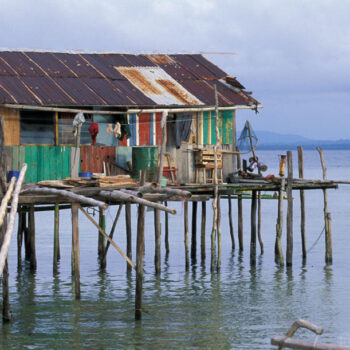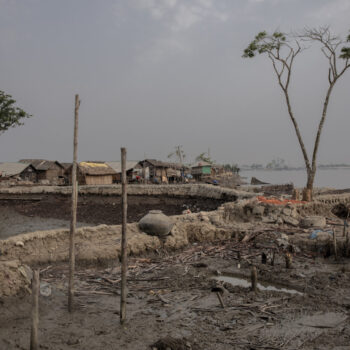Mexico was one of the first countries to submit its INDC, in March earlier this year. Its unconditional commitment of reducing its Greenhouse Gases and Short Lived Climate Pollutant emissions by 25% (below BAU) by 2030 could be raised to 40%, conditional on a global agreement that includes elements such as access to low-cost financial resources and a global carbon price – the latter of which will almost certainly not be included in the agreement in Paris.
But national efforts could also play an important role in raising ambition. Similar to Chile, Mexico has begun the process of developing a climate finance strategy that can demonstrate to decision-makers how green investments can be promoted in order to support a low-carbon transition. E3G is working with the Mexican Secretary of Environment and the National Institute of Environment and Climate Change on developing a strategic approach to climate finance.
An analysis of Mexico’s INDC shows that the power sector is central to the country’s emission reduction effort. With 31% of projected GHG emission reductions by 2030, it is the sector that accounts for the majority of the reduction target.
Mexico has pledged to get 35% of its energy from ‘clean’ sources by 2024. However, this includes not only renewable energy, but also nuclear energy and even natural gas in combination with more efficient combined-cycle plants. This indicates that the government has not yet fully recognised the potential of renewable energy in achieving an affordable low-carbon transition.
Mexico is currently undergoing a historic energy reform process driven by the need to increase efficiency and reduce cost in the power sector – and to boost the country’s oil and gas industry. The country breaks up its energy monopolies and reopens its largely untapped oil and natural gas reserves to foreign investors after almost eight decades. While this support for the oil and gas sector is not motivated by the need of ‘greening’ the economy, the government highlights that the energy reform offers opportunities to energy efficiency and renewable energy investments by opening the state-controlled energy monopoly to new actors, non-discriminatory access to the electric grid, new market incentives and auctions.
In this context, our project has begun by looking at the potential of renewable energy and the opportunity of shifting investments in the power sector towards low or zero carbon sources:
- Mexico has seen a large boom in wind energy in recent years, a trend which looks set to continue. In the next 25 years the Mexican government expects the currently installed wind power capacity to quadruple, adding an additional 22 GW which would require an investment of USD 46 billion[1]. Loans from the multilateral Climate Investment Funds, at concessional interest rates, have helped crowd-in private investment with a high leverage ratio.
- Despite its large potential, solar energy is still lagging behind, representing just 0.1% (56 MW) of total installed capacity in 2013. Nevertheless, adding up all the 2015 permits for solar projects in the pipeline, this represents 4,480 MW (a nearly 1,000% projected increase from current capacity) worth roughly USD 15 billion in new investments[2].
In September, E3G met with key actors, including investors, project developers, multilateral banks and different ministries to hear their views about the obstacles faced by solar energy, challenges with decarbonisation of the power sector and in leveraging private capital for financing the INDCs
Some of the main findings of our mission include:
- There is high interest from investors in solar energy in Mexico according to project developers given the high solar irradiance and reduction in the cost of the technology. Challenges remain in attracting more institutional investors through mechanisms such as FIBRAS and having more certainty on how the new energy market and prices will work in practice.
- With high liquidity in the market multilateral and bilateral banks that would typically play a role in mitigating risks faced by the private sector see a challenge in competing with the favourable credit conditions that commercial banks offer, thus face increasing challenges in implementing concessional low carbon credit lines. Moreover commercial banks lack appetite for financing renewable energy projects with short track records in the market, as they view them as being too risky and do not face competitive pressure to enter unknown markets.
- National Development Banks such as NAFIN are taking a stronger role in financing energy efficiency projects and geothermal, through innovative structures with the support of Climate Investment Funds and just recently have issued a Green Bond for wind energy.
- There´s a need for better coordination and understanding of finance among different ministries and the private sector. This is to ensure that available technical assistance is used efficiently, project pipelines and proposals are better structured, and that they’re aligned with a strategic view.
All these findings indicate a need for increased collaboration and dialogue between the public and private sector. At a workshop in Mexico in February next year, E3G will bring together public sector stakeholders with private sector banks, investors and project developers in order to build a common agenda that can lead to the development of public measures and instruments to further crowd-in private resources.
While building on the country specific circumstances, our project will also bring in international best practices and lessons learned that can guide Mexico’s strategic national approach to green investments. It is a timely effort by the country that will help harnessing the opportunities of shifting the power sector and implementing Mexico’s climate change commitments.
[1] Bloomberg, Mexico Planning $46 Billion Coast-to-Coast Wind-Energy Push 21 Oct 2015 [2] El Daily Post, Is there any future for solar power in Mexico? 5 Oct 2015

